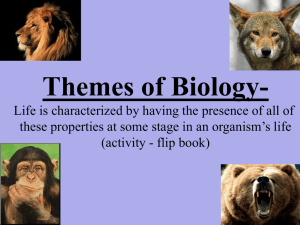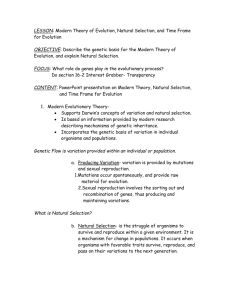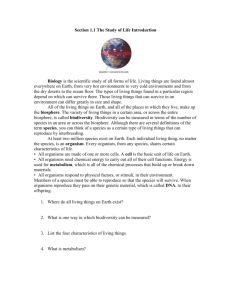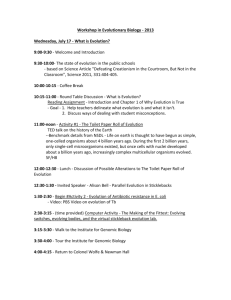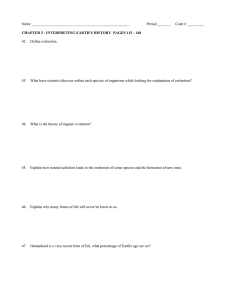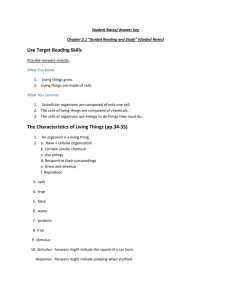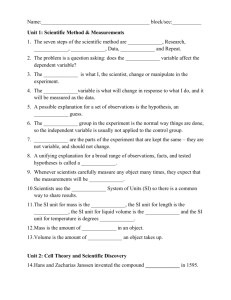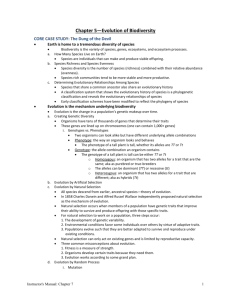Evolution of Species: Diversity, Speciation, Extinction
advertisement
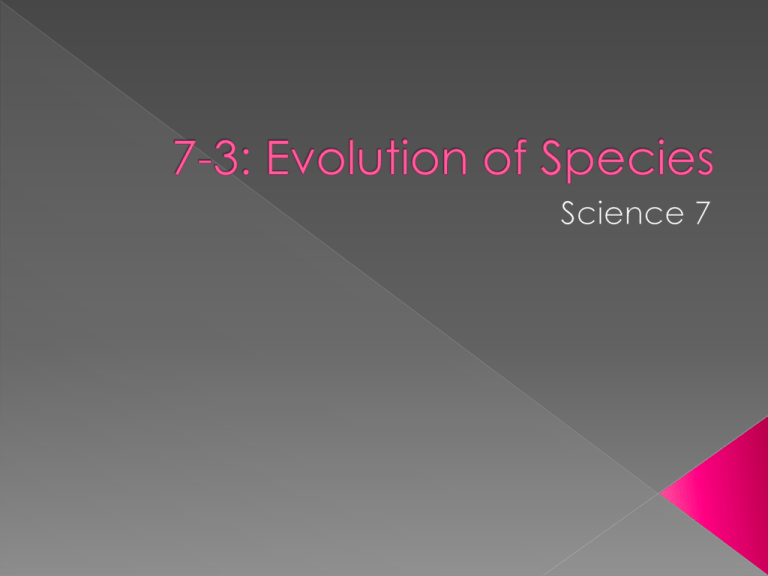
Identify factors that have contributed to the diversity of species. Explain how new species form. Explain how scientists infer evolutionary relationships among species. Explain what causes the extinction of species. Over time, different environments and genetic variation have produced, through natural selection, the variety of organisms that exist today. An organism’s habitat is the specific environment that provides the things the organism needs to live, grow, and reproduce. Organisms within the same species do not all have the same traits All genetic variations in a species make up the total “gene pool” of that species. Many species have a great variety of diversity in their gene pools. These species can often adapt to changes in the environment. In some species, most of the organisms are genetically similar. These species have difficulty surviving environmental changes. A new species can form when a group of individuals remains isolated from the rest of its species long enough to evolve different traits. One of the main ways new species form. Isolation, or complete separation, happens when some members of a species become cut off from the rest of the species. Scientists have combined the evidence from DNA, protein structure, fossils, early development, and body structure to determine the evolutionary relationships among species. Scientists infer that the species inherited many of the same genes from a common ancestor. The more similar the DNA sequences, the more closely related the species are. A species is extinct if no members of that species are still alive. Extinction is caused by a change in a species’ environment. The members of the species may not have adaptations that allow them to survive and reproduce in the changed environment. Climate change is the leading cause of extinction. Some organisms in a species may have traits that help them survive in a changed environment.
